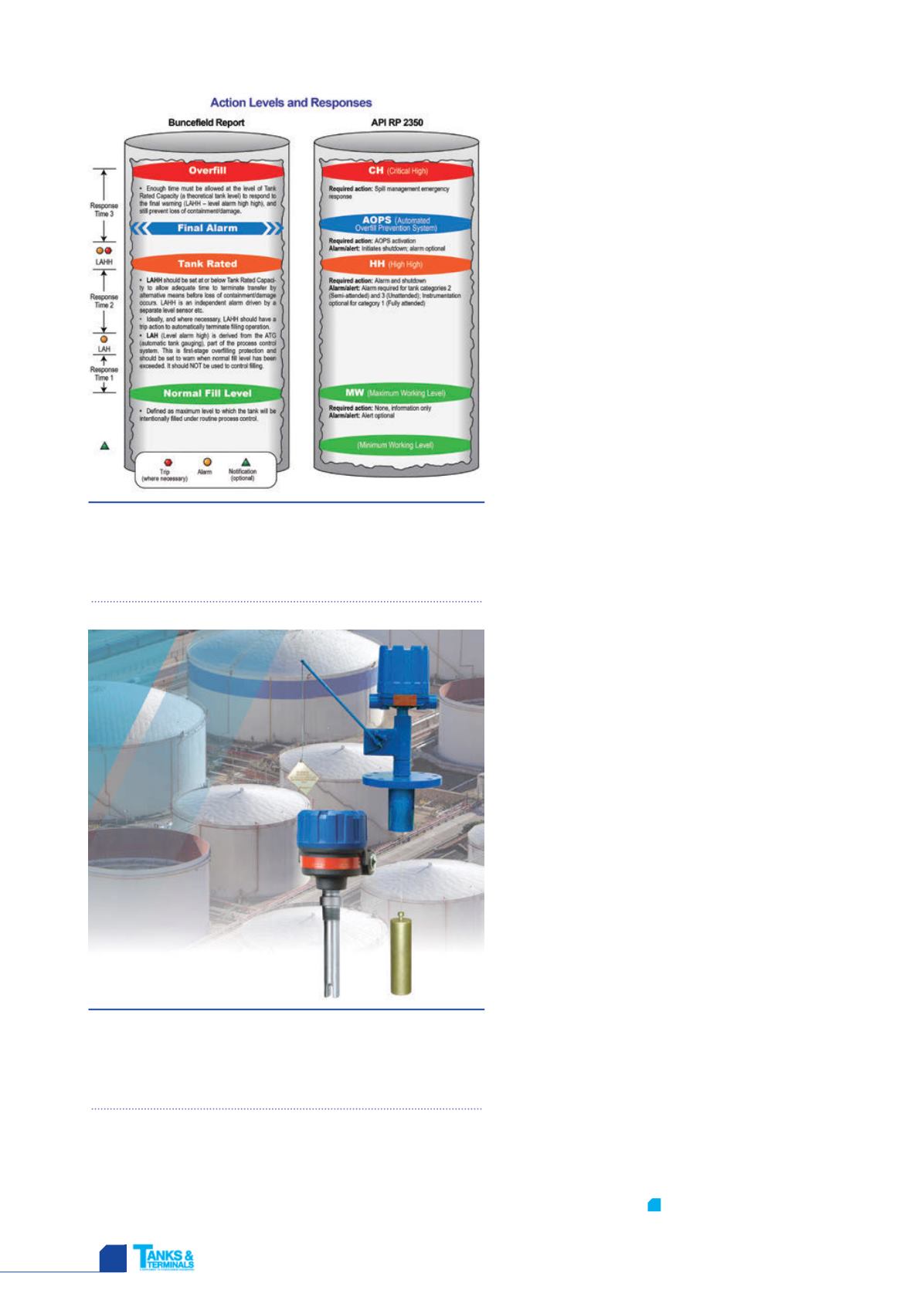
HYDROCARBON
ENGINEERING
46
Based on customer approval of Letico’s reporting, the systems
integrators began the implementation phase by standardising on
equipment. Magnetrol was able to demonstrate a powerful
automated tank gauging system solution using the A15 single-point
top mount buoyancy displacer switch and single-point Echotel®
Figure 1.
Since their publication, the MIIB Buncefield Report
and the API RP 2350 have been major drivers of process
improvement surrounding tank overfill prevention and share
similar overfill prevention system (OPS) recommendations.
Source: Magnetrol International.
Figure 2.
Letico standardised on the Magnetrol
®
A15
displacer switch and Echotel
®
961 ultrasonic switch across the
tank inventory for detection of tank floating roofs and direct
product detection in free space and stilling wells, respectively.
Source: Magnetrol International.
model 961 contact ultrasonic switch, with the A15 used to
detect tank floating roofs and the 961 used for direct
product detection in stilling wells, as well as free tank
space. The units were utilised as an independent high-high
alarm sensor.
The tank configuration was a critical consideration
when selecting technologies. The company had to specify
units for storage tanks with floating roofs and fixed
roofs – ease of installation and testing capability were of
paramount concern.
The SIL 2 suitable Magnetrol model A15 point level
sensor actuates at a discrete level and can detect the roof,
as well as the liquid level, should the floating roof become
submerged – a new requirement of the API RP 2350
4
th
Edition. The non-sparking, hollow-shell brass displacer
provides dual detection of both floating roof and liquid
levels. The units are equipped with a proofer manual
checker to enable proof testing.
The Echotel model 961 contact ultrasonic level switch
serves as a point level sensor that triggers the high-high
alarms and is suitable for SIL 2 applications. The unit has
both automatic and push-button, self-test ability to
enable proof testing. The diagnostics monitor the
electronics, transducer and piezoelectric crystal.
At this point of the project, Letico documented
comprehensive tank operational data, confirming accurate
dimensions, flow rates, response times and other metrics
for level calculations.
Using its extensive knowledge of the AP RP 2350
4
th
Edition, Magnetrol had created useful tools to allow its
customers to easily review the 4
th
Edition and take steps
to implement the new tank overfill prevention standards.
This ‘tool kit’ became instrumental to the Letico team’s
efforts, because it helped the company focus on what it
needed to do to deliver a successful installation to the
customer. It had to adopt a way of standardising on
nomenclature because each company uses different
terminology in its internal engineering practices. The
API 2350 4
th
Edition classified tanks, levels, alarms,
technologies and procedural systems, which gave Letico a
yardstick to use for its level calculation and
documentation. The worksheet and other materials in the
‘tool kit’ helped provide guidance for terminology
standardisation and overall overfill prevention process
(OPP) methodologies.
Conclusion
One of the most valuable impacts the 4
th
Edition has
made is the emphasis it places on safety instrumented
systems (SIS) and safety integrity level (SIL)
certified/suitable equipment.
The project’s results were instrumental in embedding
standardisation and documentation into a robust
operating process system and a culture of safety. Across
the organisation, workers are now thinking the same way
and looking at things the same way. Actions are
standardised, response times are measured, and
calculations are uniform. When there is a change in the
data, it is documented and specific modifications are
implemented as a result.
T&T


